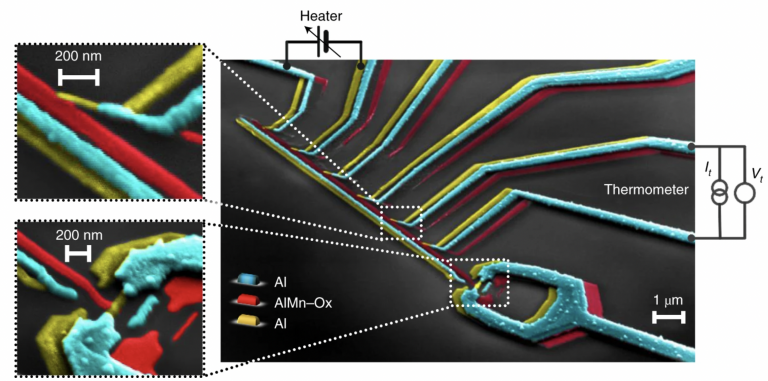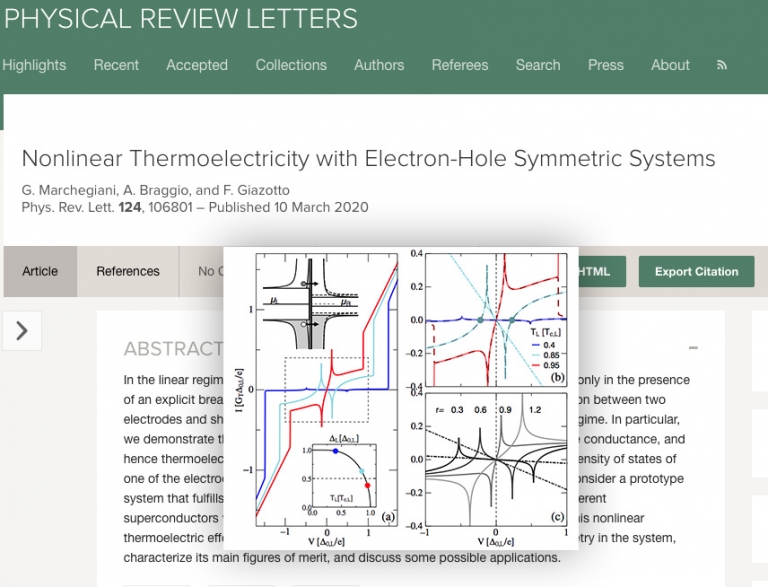Researchers at SQEL have recently developed a transistor that takes advantage of this specific quality of superconductors, a thermal superconducting quantum interference proximity transistor (T-SQUIPT) published on Nature Physics.
T-SQUIPT was first theoretically proposed by some of the authors of our recent paper several years ago, although without a concrete realization yet. Our implementation of the T-SQUIPT exploits a long superconducting nanowire as proximitized element thus allowing us to demonstrate the possibility to phase-tune the thermal transport properties of a superconductor and to realize the first thermal memory cell as well.
The core concept of T-SQUIPT is a nanoscopic island of aluminum (Al) that can be made superconducting- or normal metal-like with quantum interference induced by two superconducting leads defining a ring and placed in good metallic contact with the island. For integer values of the flux quantum piercing the superconducting loop, superconductivity is reinforced and the island behaves as a good thermal insulator. For semi-integer values of the flux quantum, superconductivity is ideally suppressed, and the island behaves as a good thermal conductor.
As part of their recent study, SQEL researchers demonstrated this ability of their transistor by sinking heat from a metallic electrode into it, which was also coupled to the aluminum island through a tunnel contact. Overall, our findings demonstrate the feasibility of phase-coherently manipulating the energy transport qualities of quantum devices.
In the future, the T-SQUIPT transistor could pave the way towards the realization of a variety of new devices. The recent paper also enhances the current understanding of energy transfer at the nanoscale, thus potentially improving its management.
More information: Nadia Ligato et al, Thermal superconducting quantum interference proximity transistor, Nature Physics (2022). DOI: 10.1038/s41567-022-01578-z

 Thermal superconducting quantum interference
proximity transistor
Thermal superconducting quantum interference
proximity transistor  “Nonlinear thermoelectricity with electron-hole symmetric systems” published on Physical Review Letters
“Nonlinear thermoelectricity with electron-hole symmetric systems” published on Physical Review Letters